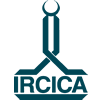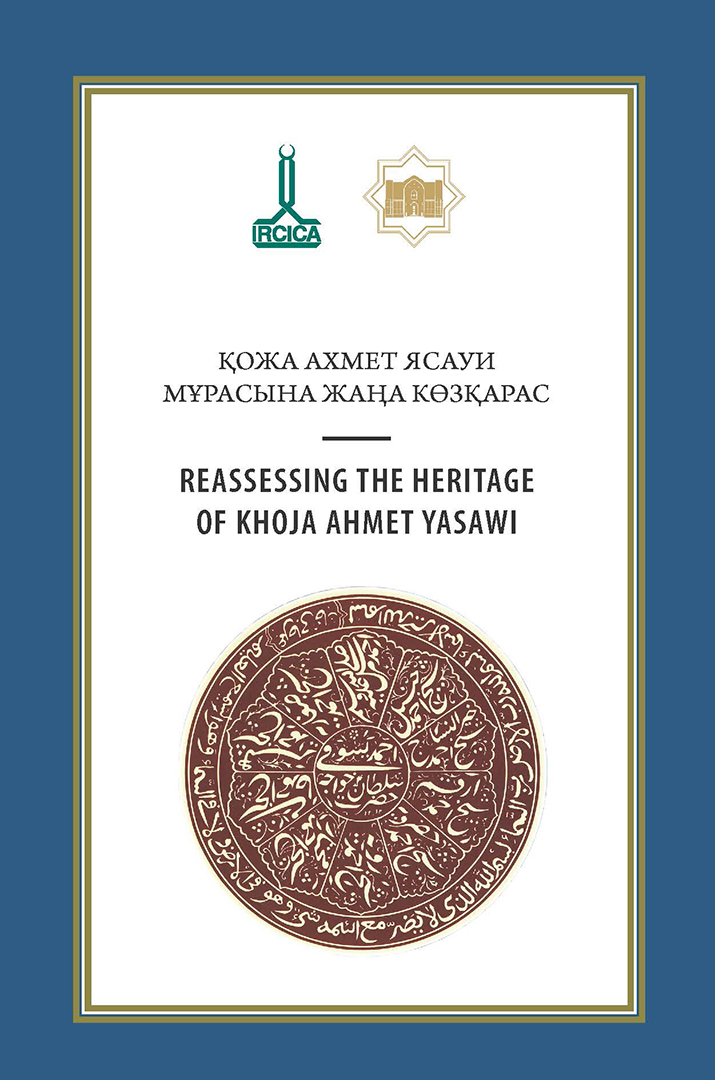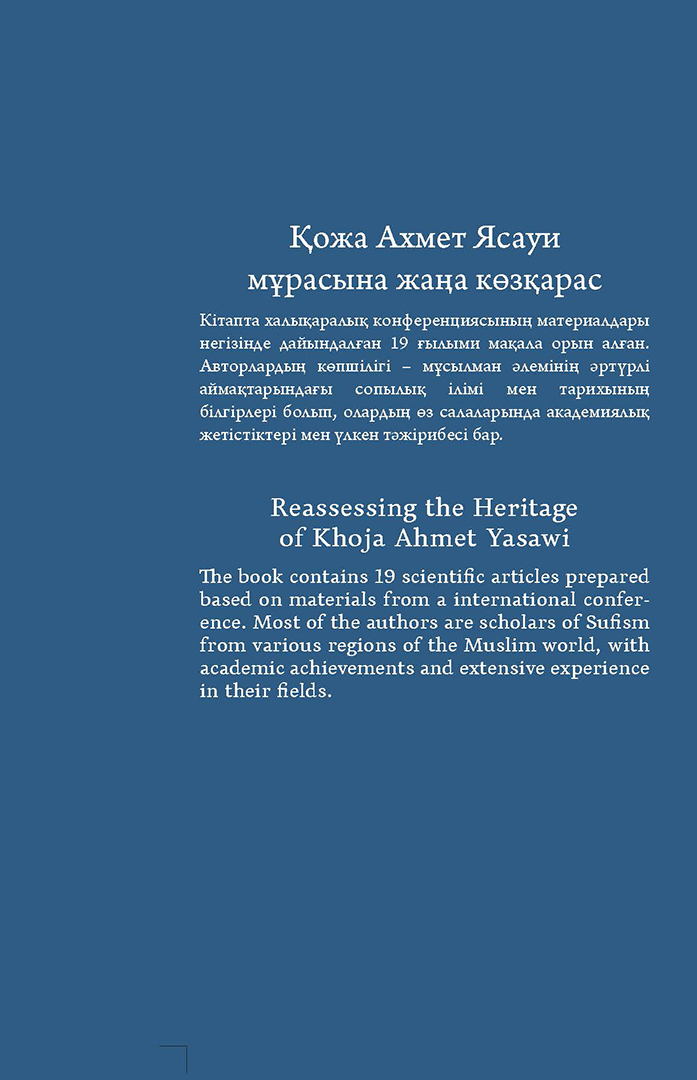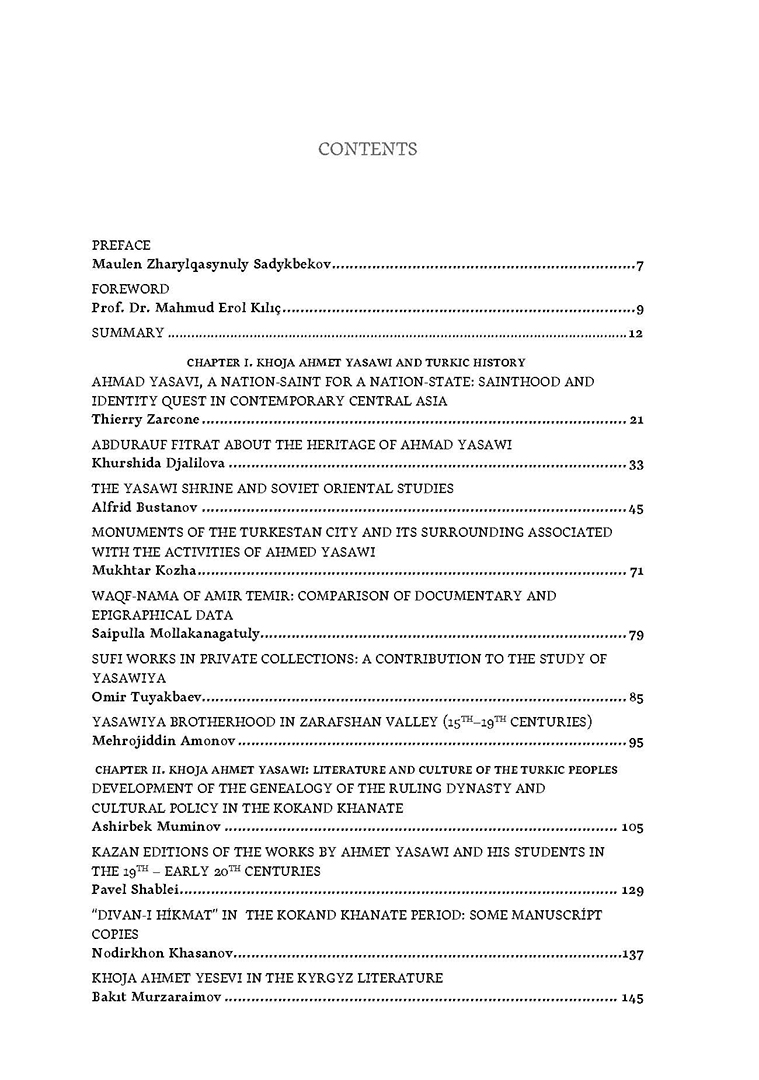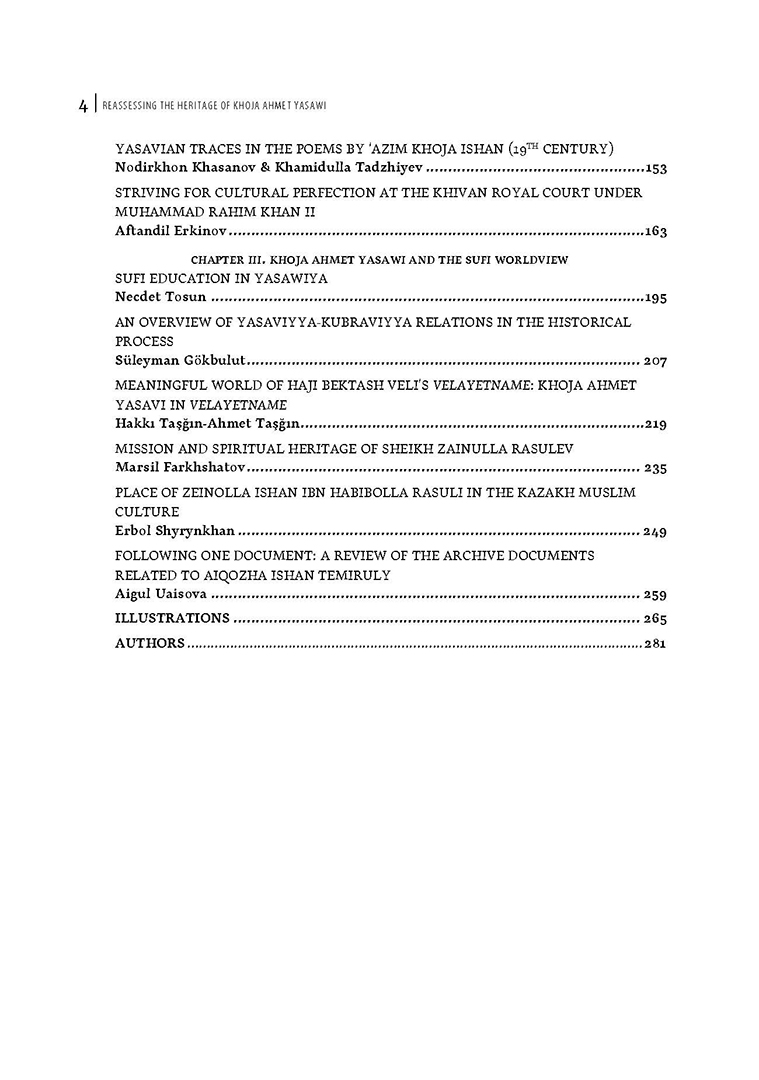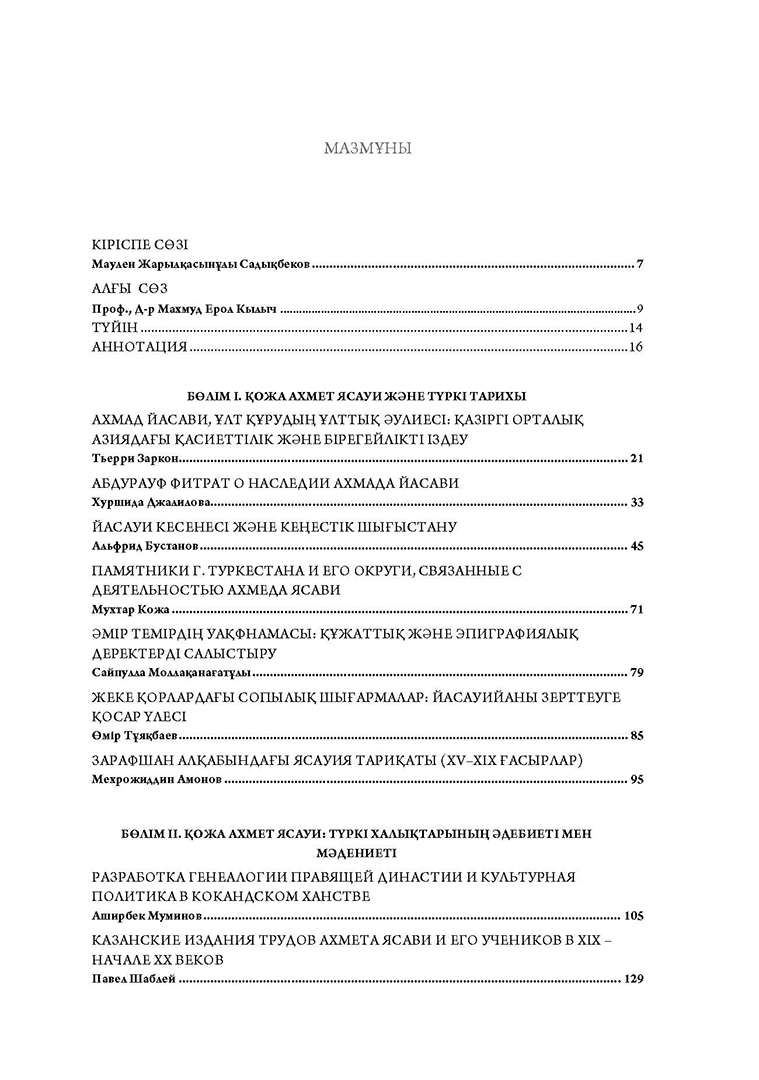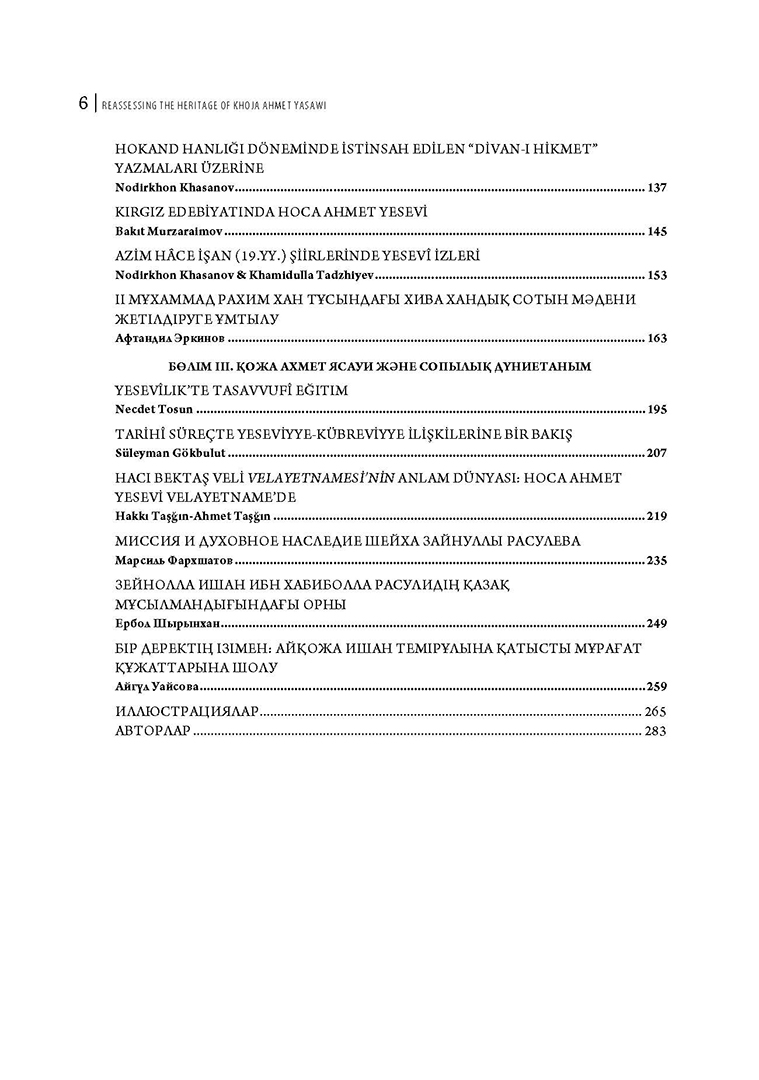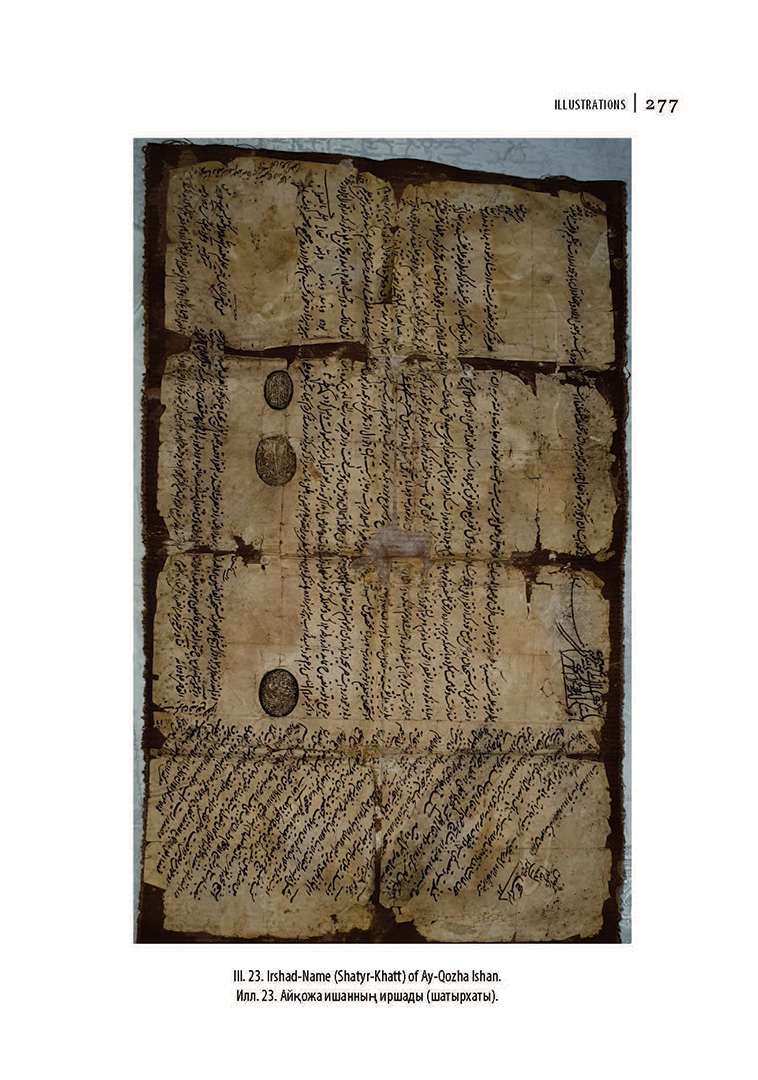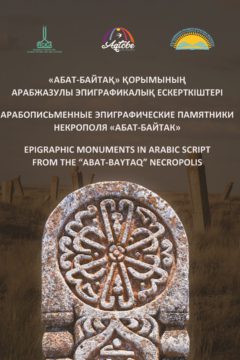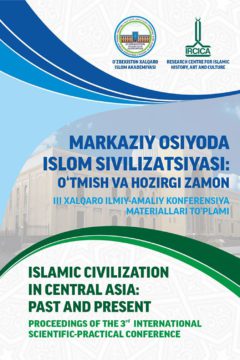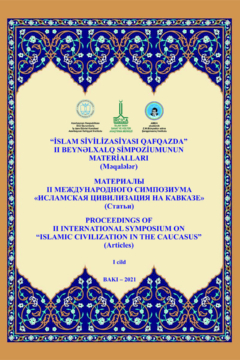This book contains twenty articles based on materials from a joint international conference of the National Historical and Cultural Museum-Reserve “Azret Sultan” (Ministry of Culture and Information of the Republic of Kazakhstan) and IRCICA in Turkistan, on 10-11 October 2023. Most of the authors are scholars of Sufism from various regions of the Muslim world, with academic achievements and extensive experience in their fields.
The first part, based on newly explored sources, examines the historical image of Ahmad Yasawi and its different representations. It contains materials that are being introduced into scientific circulation for the first time, such as epigraphic inscriptions on the mausoleum of the famous Sufi, archaeological finds, architectural monuments, seals, archival documents, and manuscripts from private collections. They are analyzed from the viewpoints of various schools of Oriental studies, along with fundamentally new approaches and methods.
The second part of articles is devoted to the study of literary monuments from the 18th–19th centuries. They reflect a new stage of studies relating to the compilation of the hikmats. The processes regarding the census of the hikmats, the publication of their collections by lithographic method, the growth of the number and circulation of printed publications, literal translations of the hikmats into various languages, their interpretation by poets, philosophers, and practicing Sufis of our time, are considered in this section. The authors recommended the production of a complete catalog of handwritten hikmats stored in world collections and the compilation of a collection of all known hikmats in Arabic script.
The third part of articles is concerned with the processes of interaction and mutual influence of Yasawiya with other brotherhoods: Kubrawiya, Naqshbandiya, Naqshbandiya-Mujaddidiya, Naqshbandiya-Khalidiya, Bektashiya, etc. Additionally, new materials are introduced into scientific circulation through the articles and their color illustrations on architectural monuments, seals, front pages of ancient publications, medieval diplomas, among others. These materials will be of interest to specialists working in the fields of Islamic history, art, culture, education, and particularly those interested in Islamic civilization in Central Asia.
